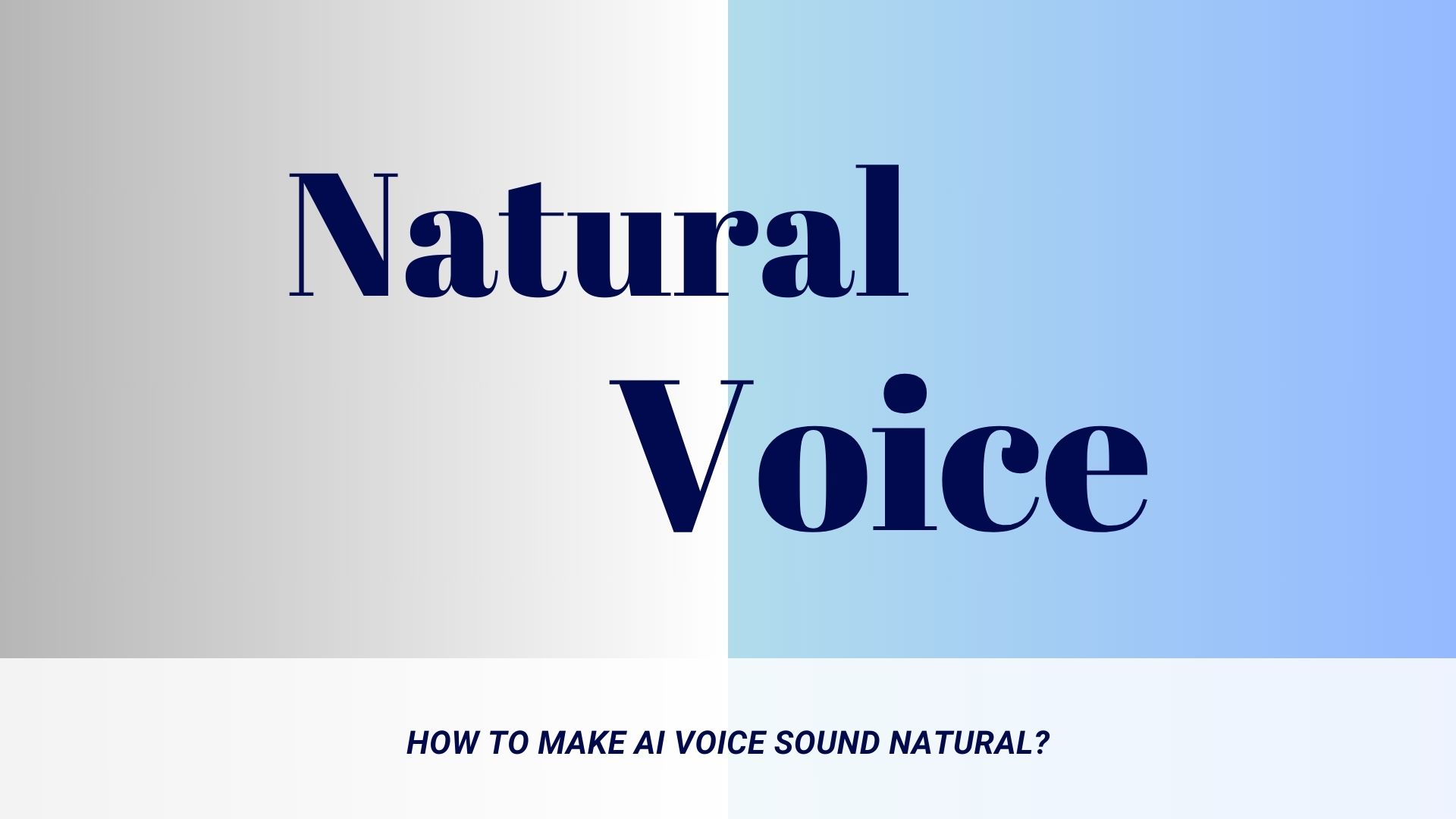How to Make AI Voice Sound Natural

Artificial Intelligence (AI) voice technology has evolved significantly in recent years. With advancements in deep learning and neural networks, AI-generated voices are now more human-like than ever before. However, despite these improvements, AI voices can still sound robotic or unnatural if not properly designed and tuned. If you want to create AI-generated speech that is expressive, engaging, and natural, there are several key techniques and best practices to consider. In this article, we will explore the essential strategies to make AI voices sound more natural.
1. Understanding the Components of Natural Speech
Before diving into the techniques, it is important to understand the key characteristics of natural human speech:
Prosody: The rhythm, stress, and intonation of speech.
Pauses and Breathing: Natural speakers take pauses and breaths while talking.
Emotion and Expressiveness: Human speech varies in tone and pitch based on context and emotions.
Pronunciation and Diction: Accurate pronunciation and clear diction enhance comprehension.
Conversational Flow: The way sentences are structured and spoken naturally.
By mimicking these elements, AI-generated voices can achieve a more realistic and engaging sound.
2. Choosing the Right Text-to-Speech (TTS) Engine
There are many TTS engines available, each offering varying levels of naturalness. Some of the best AI-powered TTS solutions include:
Google Cloud Text-to-Speech
Amazon Polly
Microsoft Azure Speech
IBM Watson Text-to-Speech
OpenAI’s TTS models
These platforms use neural networks and deep learning to generate human-like speech. When selecting a TTS engine, consider factors like voice quality, customization options, and language support.
3. Implementing Neural and Deep Learning Models
Modern AI voices rely on deep learning and neural models such as:
Tacotron 2: Generates high-quality, natural-sounding speech using sequence-to-sequence models.
WaveNet: Developed by DeepMind, it produces highly realistic speech by modeling raw audio waveforms.
FastSpeech: A fast and efficient model designed to improve naturalness and reduce latency.
Using these advanced models ensures smoother, more human-like speech synthesis.
4. Enhancing Prosody and Intonation
One of the most critical factors in making AI speech sound natural is proper prosody and intonation. To enhance these aspects:
Use Pitch Variation: Flat speech sounds robotic. Introduce natural pitch variations.
Adjust Speed and Rhythm: Humans don’t speak in a monotone or at a constant speed. Varying the speech rate makes it more natural.
Control Stress and Emphasis: Certain words and syllables need emphasis to sound more human.
Advanced TTS engines allow fine-tuning of these features to improve speech quality.
5. Adding Pauses and Breathing Sounds
Natural speech includes pauses and breathing to improve fluidity and comprehension. Implement:
Strategic Pauses: Insert short pauses at punctuation marks and longer pauses for dramatic effect.
Breathing Sounds: Some TTS engines allow simulated breathing sounds to mimic human speech patterns.
These additions make AI-generated speech feel more organic.
6. Incorporating Emotional Expressions
Human voices convey emotions through tone and inflection. AI voices can be programmed to express emotions such as:
Happiness (higher pitch, energetic tone)
Sadness (lower pitch, slower pace)
Excitement (increased volume and speed)
Seriousness (calm, steady tone)
Many AI voice platforms provide emotional tuning options to make speech more engaging.
7. Improving Pronunciation and Diction
For AI-generated voices to sound clear and understandable:
Use Phoneme-based Customization: Some TTS systems allow phonetic input to fine-tune pronunciation.
Train AI on Different Accents and Dialects: Providing diverse training data helps in better pronunciation.
Handle Homophones Carefully: Words that sound the same but have different meanings (e.g., "read" vs. "reed") should be interpreted correctly based on context.
8. Context-Aware Speech Generation
Context plays a crucial role in how speech sounds. Implementing:
Adaptive Speech Patterns: AI should adjust its speech based on context (formal, casual, or storytelling).
Conversational Memory: Retaining context in conversations ensures a more fluid and engaging dialogue.
Intent Recognition: AI should understand the intent behind a sentence and adjust its tone accordingly.
9. Utilizing High-Quality Voice Datasets
The quality of AI-generated speech depends on the datasets used for training. High-quality voice datasets should:
Include Diverse Voice Samples: Cover various ages, genders, and accents.
Have Clean and Noise-Free Audio: Poor-quality recordings lead to unnatural speech synthesis.
Contain a Large Volume of Data: More data improves AI learning and speech accuracy.
10. Post-Processing and Speech Editing
Even after generating AI speech, post-processing can further enhance its quality:
Noise Reduction: Remove background noise for a clearer voice.
Equalization and Compression: Balance frequencies and maintain consistent volume levels.
Smoothing Transitions: Remove any unnatural breaks or glitches.
These audio engineering techniques ensure a polished final product.
11. Using AI Speech for Different Applications
AI-generated voices are widely used in various fields, including:
Virtual Assistants (e.g., Siri, Alexa, Google Assistant)
Audiobooks and Podcasts
E-learning and Educational Content
Customer Service Chatbots
Entertainment (Video Games, Animated Films)
Different applications may require different levels of customization to ensure optimal naturalness.
12. The Future of AI Voice Technology
As AI voice synthesis continues to evolve, future developments may include:
More Advanced Emotional AI: AI voices will better detect and express complex emotions.
Real-time Voice Customization: Users will have greater control over voice tone and style.
Improved Multilingual Capabilities: AI will become better at switching between languages seamlessly.
Integration with Augmented Reality (AR) and Virtual Reality (VR): AI speech will enhance immersive experiences in AR and VR applications.
Conclusion
Creating a natural-sounding AI voice requires a combination of advanced neural networks, careful tuning of prosody and intonation, proper pronunciation, emotional expressiveness, and context-awareness. By leveraging state-of-the-art TTS engines, improving training datasets, and refining post-processing techniques, AI-generated voices can become nearly indistinguishable from human speech.
Whether you're developing an AI voice assistant, an audiobook narrator, or a chatbot, following these best practices will help you produce a voice that is not only intelligible but also engaging and lifelike. As technology continues to advance, AI voices will become even more refined, paving the way for more natural and human-like interactions.